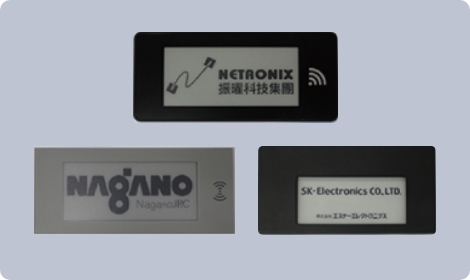The electronic paper tag is an RFID tag with a display function that uses UHF RFID technology and operates without batteries. Since the electronic paper tag can update its display content, there is no need to replace the label. In addition, since the tags operate without batteries, there is no need to replace the batteries. Because of these characteristics, these tags can be used to replace paper labels for logistics container labels, process control charts, and physical delivery slips.
Partner Companies Electronic Paper Tags
Above : Netronix, Inc.
Left: Nagano Japan Radio Co.
Right: SK-Electronics


